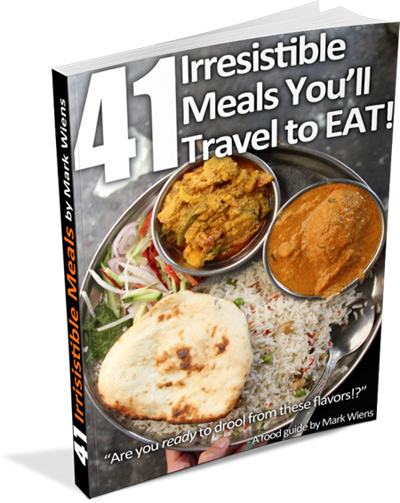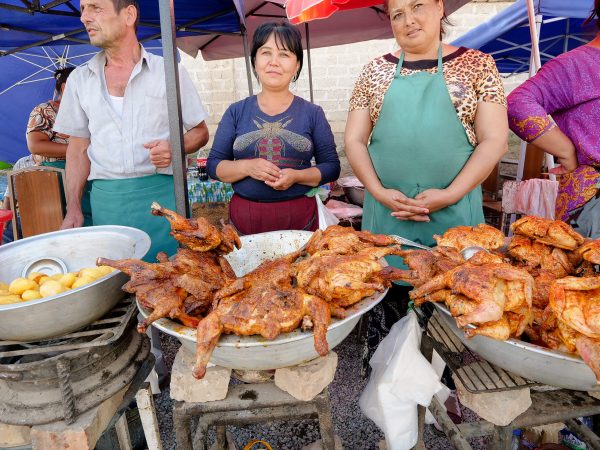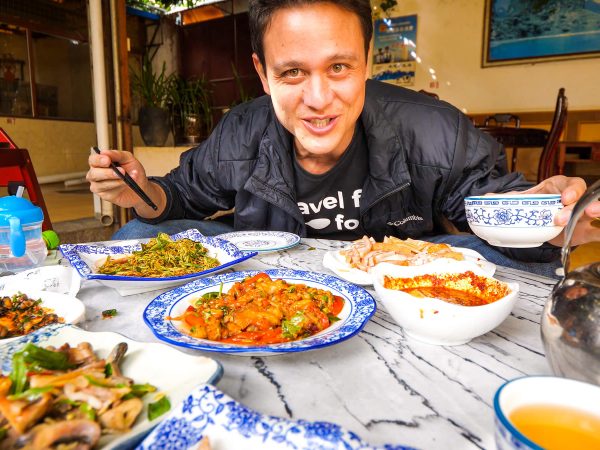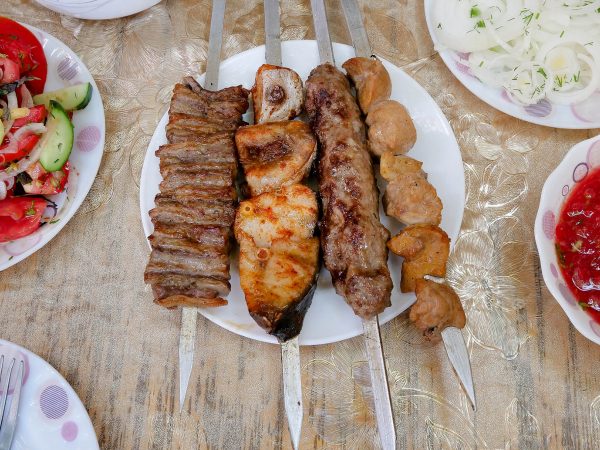
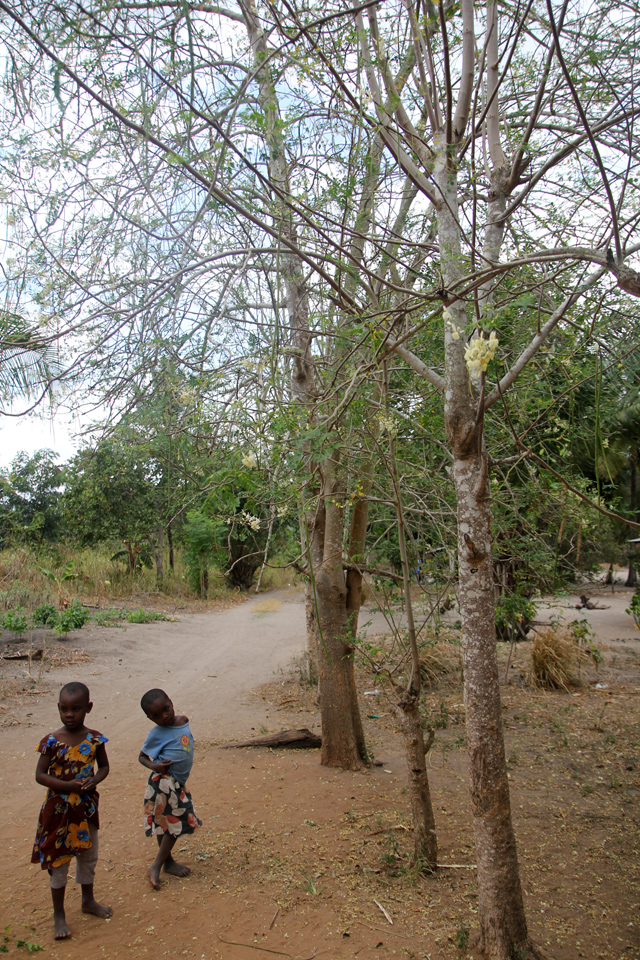
Moringa is also known as the “miracle tree.”
And after learning more about this tree and its extreme nutrition capabilities, it’s easy to understand why.
The most widely grown species of moringa originates in certain areas of India, but other species are also native to parts of Africa.
It’s a medium sized tree, very ordinary looking, and it’s easy and quick to grow. It grows in a wide variety of locations and climates.
The mainly cultivated species is known as moringa oleifera.
When I was in Tanzania, I had the opportunity to eat it, I mean right off the tree by the handful!
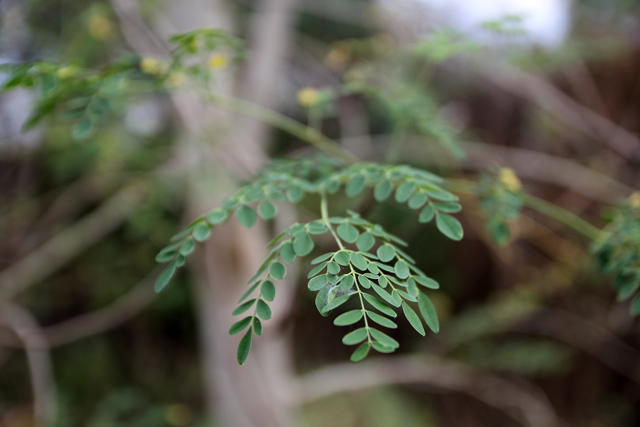
When it comes to food, moringa is extraordinarily healthy.
The leaves are known to contain huge amounts of vitamins A and B, calcium, iron, and lots of protein.
Get exclusive updates
Enter your email and I’ll send you the best travel food content.
Consuming just a handful of leaves per day (or adding the leaf powder to stews and sauces), has the power to remarkably improve the heath of someone who is malnourished or in need of protein.

And not only are the leaves incredibly healthy, the moringa pods (also known as drumsticks), which grow about a foot in length, are also incredibly useful.
The young pods can be eaten raw like green beans, and the old tough pods can be cooked and eaten in soups or stews or broken apart to eat the seeds.
According to the research conducted and explained in an article by Africa University, the moringa seeds can be crushed in polluted water and they will purify the water, amazing!
Anyway, I personally don’t claim to know much about this miracle tree (you can read more about it here), but while I was in Tanzania I had an opportunity to eat some leaves.
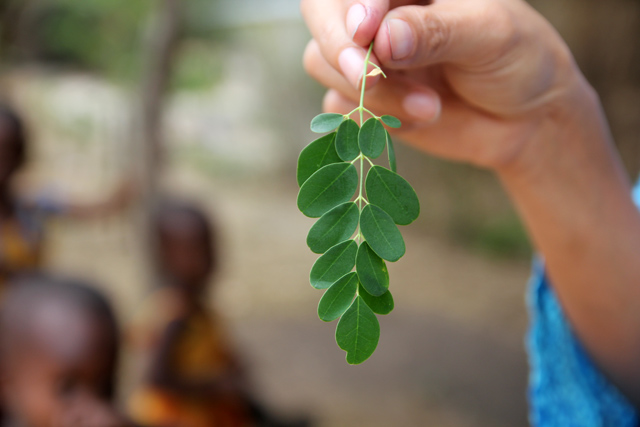
You can literally just grab handfuls of moringa leaves right off the tree and start munching.
They taste a little sweet, and very herbal, green, like you’d expect from eating a leaf.
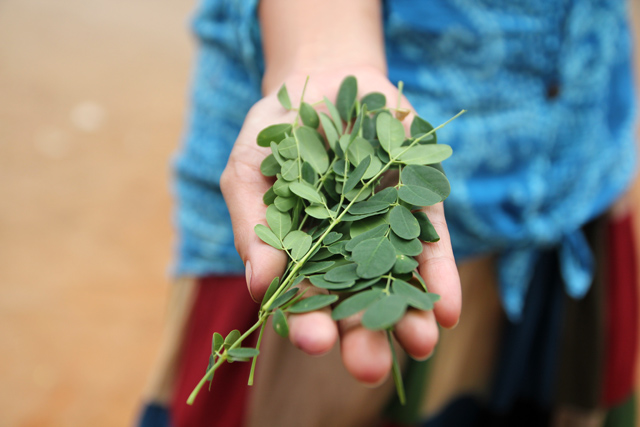
Not only is moringa miraculously healthy, it’s also quite fun to just walk up to a tree and start munching on leaves – couldn’t be more fresh!

I was actually familiar to the pods of moringa before going to Tanzania as they are eaten in Thailand, known as mallum.
However, I had not previously eaten the leaves or eaten the young pods without them being cooked, nor did I realize their health benefits.
Moringa is truly a remarkable tree that has so many healing properties.
Singlehandedly, due to its nutritional value, moringa has been able to transform entire malnourished villages in Africa to better health and a more well rounded nutritional diet.
Moringa still has huge potential for the future.
Have you eaten moringa?
Get exclusive updates
Enter your email and I'll send you the best travel food content.
